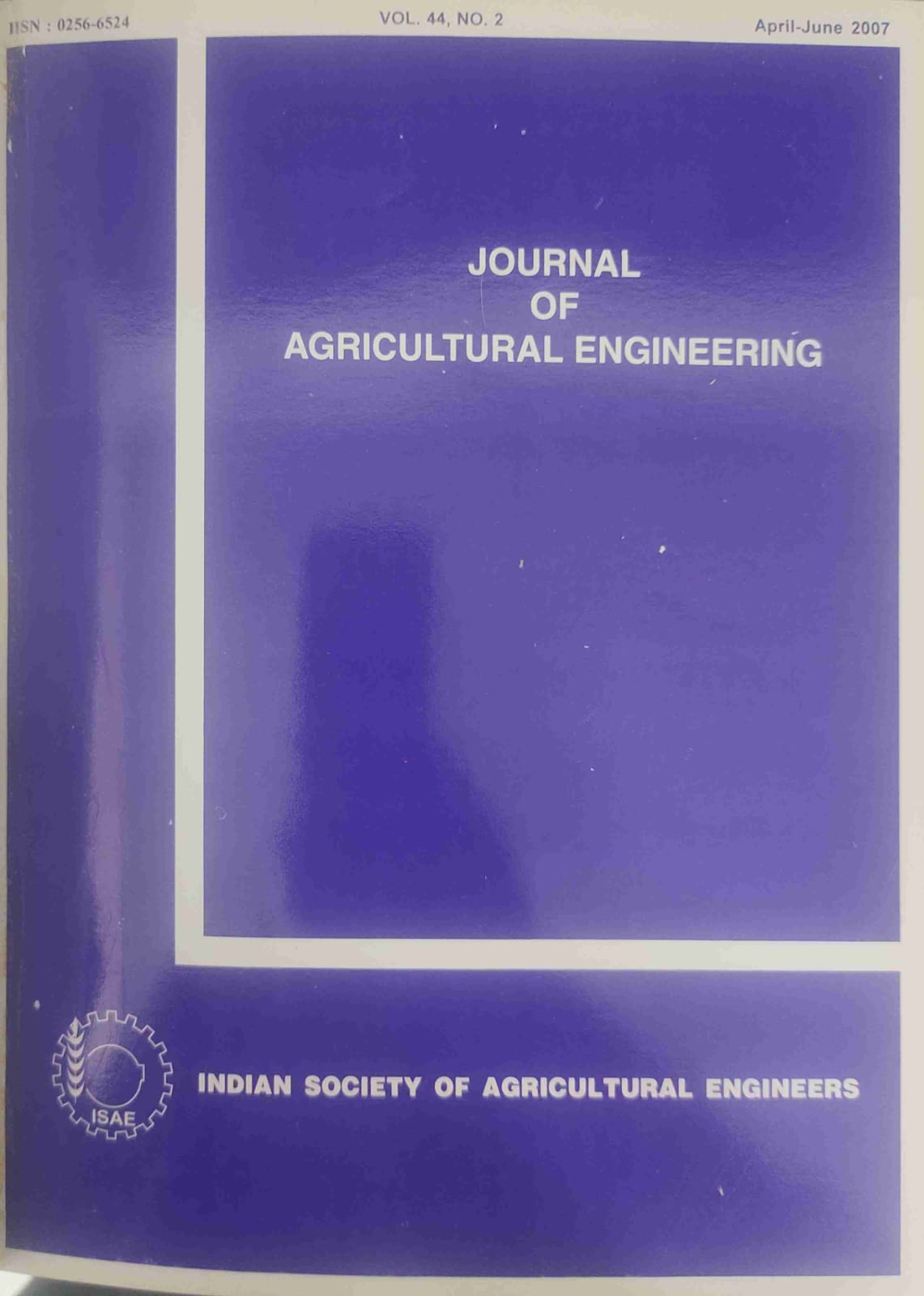Integrated Modeling Approach to Improve Hydraulic Performance of a Main Canal System
DOI:
https://doi.org/10.52151/jae2007442.1261Abstract
Realizing the need for improving the performance of the existing irrigation systems within their physical constraints, an integrated optimization-simulation (lOS) model is developed and applied to the Right Bank Main Canal (RBMC) system of Kangsabati Irrigation Project, West Bengal, India. The model decides the time series optimal canal releases at the system source and selected inline structures. The integrated model consists of a non linear optimization routine, a canal hydraulic module (MIKE I I) and a command hydrological module (MIKE SHE). An improved rotational delivery schedule developed earlier is used in conjunction with the integrated model. To evaluate effectiveness of integrated model in improving the performance of a main canal system, three-simulation scenarios such as (i) MIKE 11 and MIKE SHE simulation (MMS), (ii) Integrated Optimization-Simulation (lOS), and (iii) Integrated Optimization-Simulation with Improved Schedule (lOS_IS) are considered. Simulation results using the integrated model and improved delivery schedule recorded a significant improvement in the values of three performance indicators Le., adequacy, equity and dependability. Three-year average of weighted adequacy improved from 0.65 to 0.71 (lOS and lOS_IS); whereas three-year average equity improved from 0.32 to 0.22 (lOS) and 0.18 (lOS_IS). Similarly, three-year average of weighted dependability improved from 0.62 to 0.49 (lOS and lOS_IS). Encouraging results demonstrated the capability of integrated modeling approach as a cost-effective solution for improved system performance within the existing infrastructure.
References
Bos MG. 1997. Performance indicators for irrigation and drainage. Irrig. and Drain. Sys. II, 119-137.
Bottral A. 1981. A comparative study of the management and organization of irrigation ·projects. World Bank Staff Working Paper No.458, World Bank, Wa$ington D.C.
Clemmens A J; Bos MG. 1990. Statistical methods for irrigation system water delivery performance evaluation. Irrig. and Drain. Sys. 4, 345-365.
Loof R; Paudyal G N; Manguerra H B. 1991. Mathematical modelling of irrigation canal systems state of the art. Monograph No.2, Agricultural Land and Water Development Program, Asian Institute of Technology, Bangkok, Thailand.
Malaterre P O. 1995. Regulation of irrigation canals. Irrig. and Drain. Sys. 9 (4), 297-327.
Mishra A. 2001. Development of an integrated optisimulation model for major irrigation projects. Ph.D. Dissertation. Department of Agricultural and Food Engineering. Indian Institute of Technology, Kharagpur.143p.
Mishra A; Singh R; Raghuwanshi N.S. 2002. Alternative delivery scheduling for improved canal system performance. J. Irrig. and Drain. Eng. (ASCE). 128 (4), 244-248.
Molden D J; Gates T K. 1990. Performance measures for evaluation of irrigation-water-delivery systems. J. Irrig. and Drain. Eng. (ASCE). 115 (6), 804-823.
Tyagi N K; Bhirud S; Kaushal R K; Ambast S; Mishra A. 1995. Improving canal water delivery performance some approaches. Publication No. 246. Central Board of Irrigation and Power, New Delhi.














